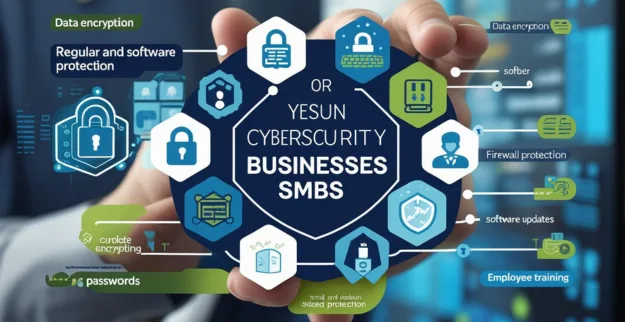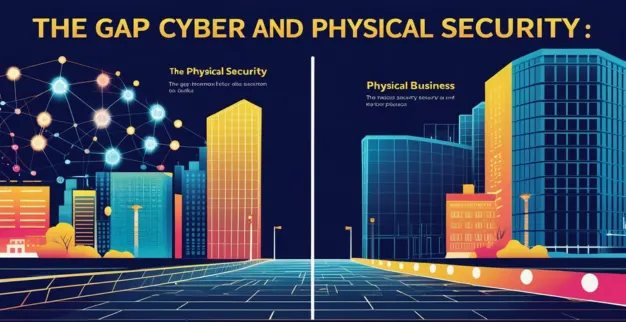Cybersecurity Best Practices Every SMB Should Know
By: Ganesan D
25 Aug 2025
Category: Cybersecurity
Small and medium-sized businesses often believe they’re too small to ever make it onto a hacker’s radar. Unfortunately, that misconception makes them even more appealing targets. Cybercriminals see SMBs as low-hanging fruit—with weaker defenses but still valuable data. As threats become more sophisticated, proactive cybersecurity is no longer optional. Here's a roadmap SMBs can follow to protect themselves.
1. Why SMBs Are Prime Targets for Cybercrime
Cybercriminals increasingly focus their attacks on small businesses. Around 43–54% of all cyberattacks now target SMEs. These businesses typically lack robust security infrastructure, dedicated cybersecurity staff, or sufficient training for employees. On top of that, many SMBs store customer data, financial records, or confidential information—making them just as profitable targets for hackers, but much easier to breach.
Notably, it’s estimated that 60% of small businesses close within six months of experiencing a cybersecurity breach. Recovering from downtime, reputational damage, and financial loss is especially difficult when cybersecurity isn’t a priority until it's too late.
2. Real-World Examples of SMB Cyber Breaches
Real stories drive home the risks. Just a few weeks ago, a 158-year-old UK transport company had to shut down after ransomware crippled their operations. Attackers guessed a weak employee password, encrypted the systems, then demanded a £5 million ransom—costing 700 employees their jobs.
Another sobering case: in South Australia, local businesses were hit by an invoice interception scam. Criminals altered invoice details and tricked a business into sending AU$34,000 to a fraudulent account—revealing how even straightforward phishing can devastate SMBs.
These stories underscore the importance of basic cyber hygiene—password strength, invoice verification, and employee awareness.
3. Cyber Hygiene Practices Every Employee Should Follow
Every team member—from interns to execs—must understand their role in security. Here’s what to emphasize:
- Strong, unique passwords: Use password managers, enforce complexity, and avoid reuse.
- Enable Multi-Factor Authentication (MFA): It's your simplest line of defense against credential theft.
- Be phishing-aware: Employees should know how to spot suspicious links and emails.
- Keep systems patched: Regularly update software, operating systems, and antivirus tools.
- Follow incident response procedures: Everyone should know what to do if they suspect a breach.
Ongoing training—rather than one-off sessions—is key to keeping teams vigilant.
4. Multi-Layer Security (Firewall, Antivirus, MFA, Backups)
Relying on a single line of defense is risky. Instead, layer up:
- Firewall & Antivirus: Tools like Comodo Free Firewall, ManageEngine Firewall Analyzer, Sophos Firewall, and Fortinet FortiGate Cloud are tailored for SMBs.
- MFA: Deploy MFA across all systems—email, cloud apps, financial portals.
- Regular Backups: Adopt automated backup routines—preferably offline or cloud-based—and test recovery regularly.
- Endpoint Protection & Monitoring: Use detection tools that alert on suspicious behavior across devices.
5. Affordable Cybersecurity Solutions for SMBs
Building robust security doesn’t have to break the bank. Here are cost-effective approaches:
- Outsource to MSSPs for 24/7 monitoring, incident response, and policy maintenance.
- Deploy budget-friendly yet effective tools like Comodo Free Firewall, Sophos Firewall, or open-source antivirus.
- Use cloud-based solutions with built-in security and MFA (e.g., Office 365, Google Workspace).
- Run regular risk assessments and leverage free small-business security toolkits.
6. Pulling It All Together: A Human Perspective
Think of your SMB’s cybersecurity like a neighborhood watch. Vigilance, strong locks (MFA), a watchful community (trained employees), and good communication (incident plans) make a difference.
Start by making security awareness part of your culture: remind staff often, test with phishing simulations, celebrate good behavior, and reward reporting threats. Build a toolbox—a firewall, antivirus, MFA, backups, and monitoring. Plug into cost-effective services or partners for expert help.
Preparation doesn’t need to be perfect—but it must be consistent and evolving. Even small businesses can build cybersecurity resilience and turn safety into opportunity.
Final Thoughts
Why it matters: SMBs face more threats than ever, and even small breaches can be existential. Awareness training, layered defenses, and practical tools provide meaningful protection without breaking your budget.
Take action: Start with staff training and MFA today. Add firewalls, backups, and monitoring soon after. Keep implementation simple but consistent.


